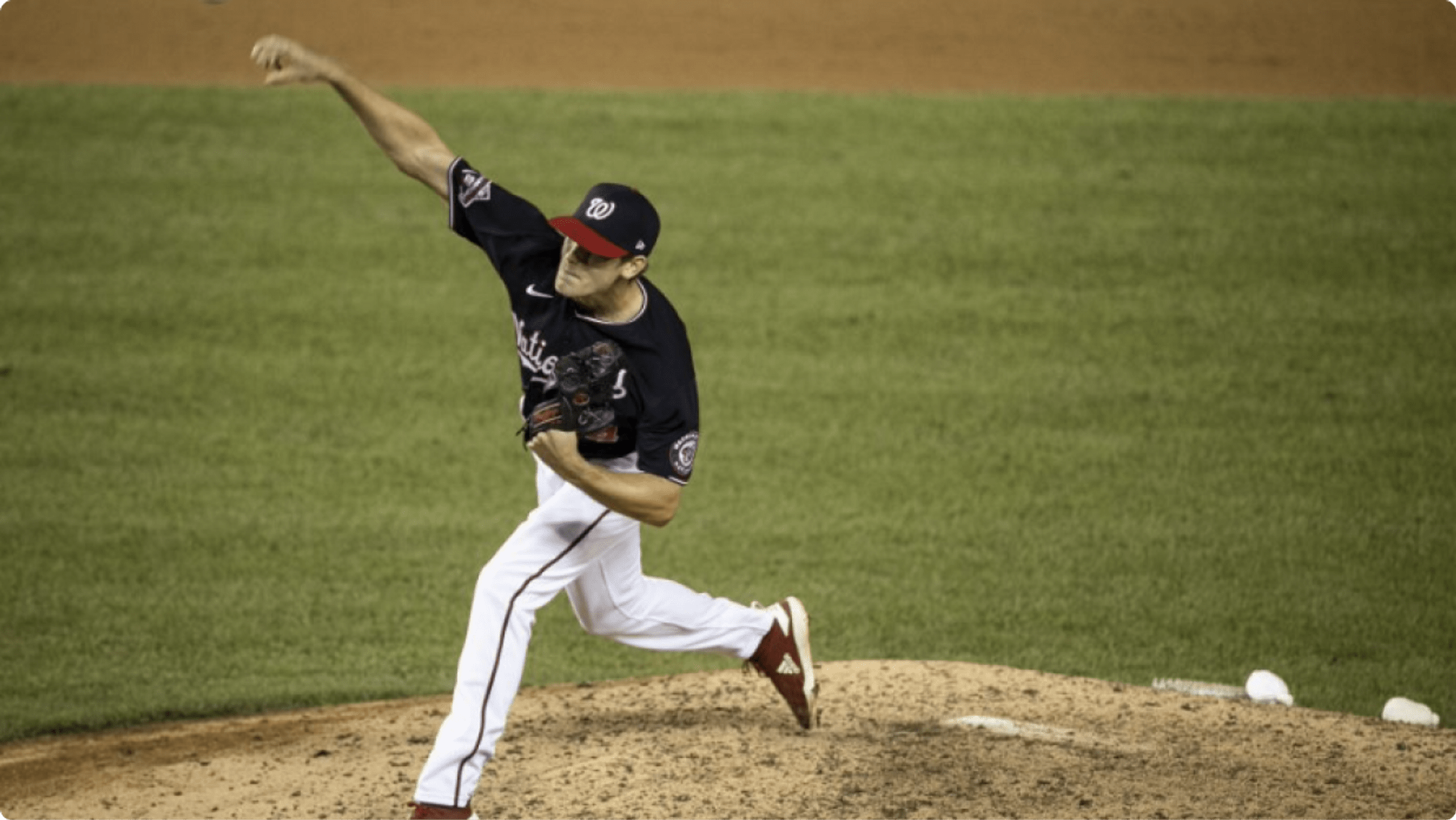James Bourque, RHP
San Diego Padres Organization
James Bourque knew he had more to tap into on the mound if he could just stay healthy.
Unfortunately it wasn’t that easy. The big right-hander appeared six times in relief for the Nationals in 2020 but Tommy John ended his season early. After he recovered from that surgery, he fractured his throwing arm. That one required another three surgeries of inserting screws into his elbow, adjusting those screws, and eventually taking them out this past November.
Bourque made a call to Driveline basically as soon as the anesthesia wore off.
“I just got to the point in my career where I said, you know, I’m really tired of being injured,” he said. “And if I’m going to really be invested in baseball, I want to go to the best place and meet with the sharpest people and be in a culture where everyone there has a similar idea of what they’re trying to do, whether that’s a high school kid trying to make his varsity team or a guy with 10 years of MLB service trying to get better.”
Bourque and his trainer, Toby Nagel, ripped everything down to the studs. The two got started on a return-to-throw program, with Bourque throwing three times per week at the beginning of the offseason with velocity caps. That got ramped up to six times per week. Then he got on a mound throwing nice and easy, then eventually was throwing 100 percent off the mound.

“The biggest thing for him was getting him healthy,” Nagel said. “Not just in-the-moment healthy, but being able to bounce back from high intensity outings, being able to recover, and being able to throw multiple ones per week.”
But that’s the sped-up version of Bourque’s recovery.
The first thing the pair did was watch video of when Bourque was really humming on the mound. Then they dove into Trackman data on those outings to get an idea of where they wanted to get back to.
At the same time, Bourque started reworking his mechanics on the mound, which he felt like were contributing heavily to his injury history.
“I wanted to start from square one,” he said. “Like if I need to just throw plyos for a little while and really groove a new upper body, lower body pattern, then that’s what I want to do.”
And that’s what he did. It was really elementary stuff, Bourque explained, like the drills trainees do when they first learn how to use PlyoCare Balls.
By January, Bourque was ramping up to throwing six days a week as long as he felt good; if he didn’t, he and Nagel would talk about why and readjust the plan accordingly. It was a new process for Bourque, who up until his time at Driveline would play catch and do flatgrounds, work on some things, and call it a day. He didn’t really ever know how much stress he was putting on his arm until he started using PULSE during his recovery.
“PULSE was huge for me,” Bourque said. “As someone who used to throw flatgrounds all the time, having something that holds you accountable for the amount of force you’re putting through your arm and how many throws you’re making is kind of a wake up call.”
Monitoring his workload in that way sped up his recovery immensely, and allowed him to move into a pitch design phase of the offseason rather quickly.
Bourque had always leaned exclusively on his upper-90s four-seam and his hammer curveball, until the Cubs signed him ahead of the 2021 season and suggested a sinker. He tinkered with that pitch for a while, had some marginal success with it, but didn’t really know what the pitch should feel or look like.
Insert Nagel and the Driveline pitching department.
What Nagel really wanted to reinforce to Bourque about his sinker was just how much of an outlier the pitch was. There were only two Big Leaguers last year who averaged a release height of 6-foot-5 on a sinker and threw it at least 95 mph. Bourque’s release height is closer to 6-foot-8, he’s throwing it every bit as hard as 95 mph, and also gets four fewer inches of carry, meaning four more inches of sink.
He feels good about his arsenal now. He feels healthy. He feels like he’s ready to get outs again.
The Padres do too. San Diego signed Bourque to a minor league deal in mid-May, and after a quick ramp-up in Arizona, assigned him to Double A San Antonio to get his feet back under him in pro ball.
None of that happens without Driveline, Bourque said.
“I was curious what was going to make me a better pitcher,” he said. “I got to a point where I had talked to Toby, he had talked to other guys and bounced ideas off people. There are a lot of really smart people in the room and we got to a point where we all said, ‘Hey, I think this works.’ So that was really reassuring…As someone who has had that experience, it’s hard to see why more people don’t go and do that. Because I really think that if you want to be your best, like the healthiest pitcher you can be, you know where you need to go.”